We are constantly striving to improve Beey so that the resulting transcripts are as accurate as possible, and so that our users can save as much time as possible during the subsequent editing. It is important that Beey can recognize all the words that appear in the recordings, which is why every morning we perform a dictionary update, adding new words from the previous day.
Equally important, however, is having a good quality recording as the input, and this is something that you can ensure by using suitable recording equipment. There is a wide selection of microphones available on the market, so how do you choose the one that’s right for you?
We\’ve tested several of them for you.
| Model | Our rating | |
|---|---|---|
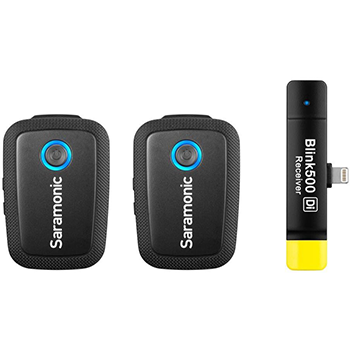 | Saramonic Dual-Channel Wireless Microphone System with Lavalier | 9.0/10 |
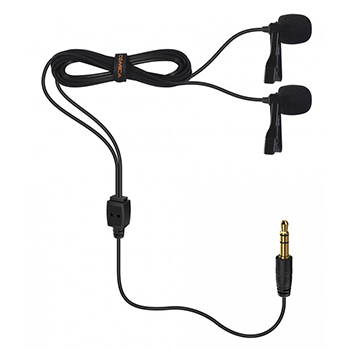 | COMICA CVM-D02 Dual-Head Microphone | 8.8/10 |
 | ZOOM Stereo Microphone pro Android | 8.9/10 |
 | iRig Mic Studio Digital Studio Microphone Micro Studio Numérique | 8.5/10 |
The testing process
We selected several devices from various price categories. The initial requirements were compatibility with smartphones and availability on the Czech market.
Testing took place in the form of a conversation between two people who followed a prepared script. The conversation was recorded on all the tested devices simultaneously in order to ensure a level playing field. We recorded the same conversation twice, in two different acoustic environments; the first reading was done in a quiet environment, and the second in a café environment with ambient noise.
We tested the microphones without making any further adjustments to the settings. We simply took them out of the box, connected them to our smartphones (and, if needed, downloaded the necessary apps), and made sure all the microphones were charged. We then got straight into recording with the default settings. In other words, we followed the same procedure that you\’d expect most new users to follow.
We had the resulting recordings transcribed in Beey and then compared the quality of the transcription with the reference text. The accuracy, i.e., the percentage of correctly recognized words, corresponds to the Word Error Rate and was the main factor in our overall rating for the microphones that we tested.
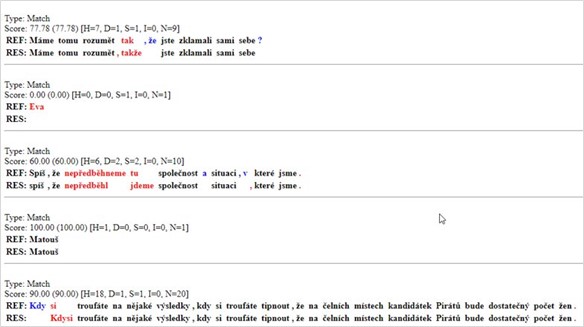
Microphones tested
Outdoor interviews
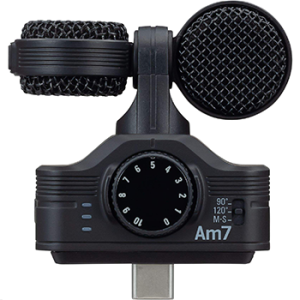
ZOOM Stereo Microphone pro Android (8.9/10*)
This device is relatively affordable, with a market price of around 2,500 CZK. It is available in two variants: either for iOS or Android.
Especially useful for those who need to conduct interviews in public places (journalists, students and researchers), this mic is easy to use. Just download the app to your phone, plug the microphone in using the USB-C connector (Lightning connector in the case of the iOS version) and start recording. Even with the default settings the recording quality is great, but even better results can be achieved by playing with the settings, for example by adjusting the input volume level as needed.
During our test, the phone with this microphone was placed on a table – further away from the mouth than a lapel microphone – but it still boasts good results. When you use this recording device in a café, the negative impact of ambient noise is minimal.
Free movement
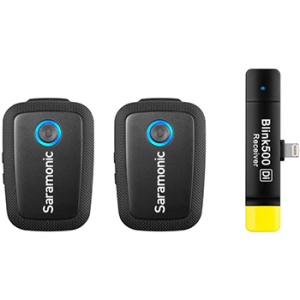
Saramonic Dual-Channel Wireless Microphone System with Lavalier (9.0/10*)
At a price which ranges from 6,000 to 7,000 CZK, this device is suitable mainly for professional use. Out of all the microphones that we tested, this one resulted in the best transcription.
The package consists of a pair of wireless microphones, which the interviewees can clip onto their clothing and, if necessary, attach an additional lapel microphone (also provided). Pairing the mic with a smartphone is problem free and the wireless transmission allows for free movement up to 50m away from the receiver.
Each microphone has a built-in battery that lasts up to 6 hours of active use. If you want to avoid unnecessary hassles when recording a conversation, then you need to make sure that the wireless devices are sufficiently charged in advance. For this test, we used the version with a USB-C connector, but versions with a Lightning connector or a 3.5mm jack are also available for the same price.
Desk microphone
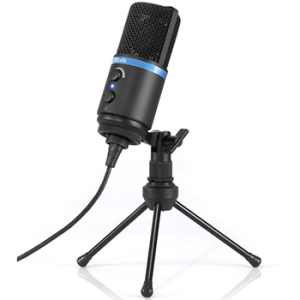
iRig Mic Studio Digital Studio Microphone Micro Studio Numérique (8.5/10*)
This studio microphone can be purchased for the price of approximately 4 000 CZK.
The package includes several connectors; Lightning, USB-C, and USB. Of course, this device offers various options in the settings, but even with the default settings it is possible to make a good quality recording.
Although primarily designed for podcasts or studio music recordings, this microphone has a wide range of uses. For example, it has proven itself useful during team meetings in an office with a large number of people, where the microphone can remain conveniently placed on the desk. Based in the results of our tests, we recommend this device for use in a soundproofed environment. When recording with ambient noise, we observed a significant decline in the accuracy of speech recognition.
Quality sound at an affordable price
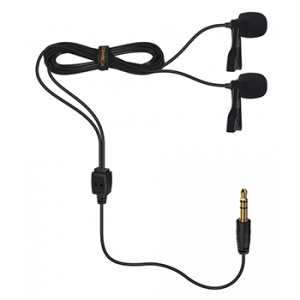
COMICA CVM-D02 Dual-Head Microphone (8.8/10*)
This device is proof that you don\’t have to compromise on quality even when you’re working with a lower budget. It\’s great for making recordings, and it\’ll set you back less than 1,000 CZK. Our tests suggest that the device is slightly more sensitive to ambient noise, but the resulting recordings were of good quality nevertheless.
These are two lapel microphones connected via one cord, with one input in the form of a 3.5mm jack which you can plug into either a smartphone or a camcorder. The package also includes an adapter for connecting to a GoPro and wind protection, which reduces wind noise and is especially useful when recording outdoors.
It\’s easy to use; just plug the jack into your phone and hit record. There’s no need to charge or install anything. The only possible limitation is the length of the cord, which varies from 2.5 to 6m depending on the version that you buy.
More tips
Whichever microphone you choose, remember that you too have a great deal of control over the resulting recording quality. We have compiled some basic tips for you here:
- Try to record in a quiet environment with minimal background noise.
- Enunciate clearly, don\’t mumble.
- Take turns and don\’t talk over one another. If possible, ensure that only one person is speaking at any given moment. Did you know that even interjections such as “Uh-huh” and “I see” have a negative impact on the quality of speech recognition?
- Speak directly into the microphone, try not to turn your head away.
- Set the highest possible recording quality on your device. The resulting file will be a little larger, but you\’ll see it\’s worth it in the end.
In most cases, the audio recorder you have on your phone will suffice. If you\’re serious about recording interviews, we can recommend the Easy Voice Recorder mobile app, which is available in a free version, as well as paid Pro version for less than $4.
You\’ll find plenty of other tips and tutorials on Beey.io, including one on how to record a quality interview.